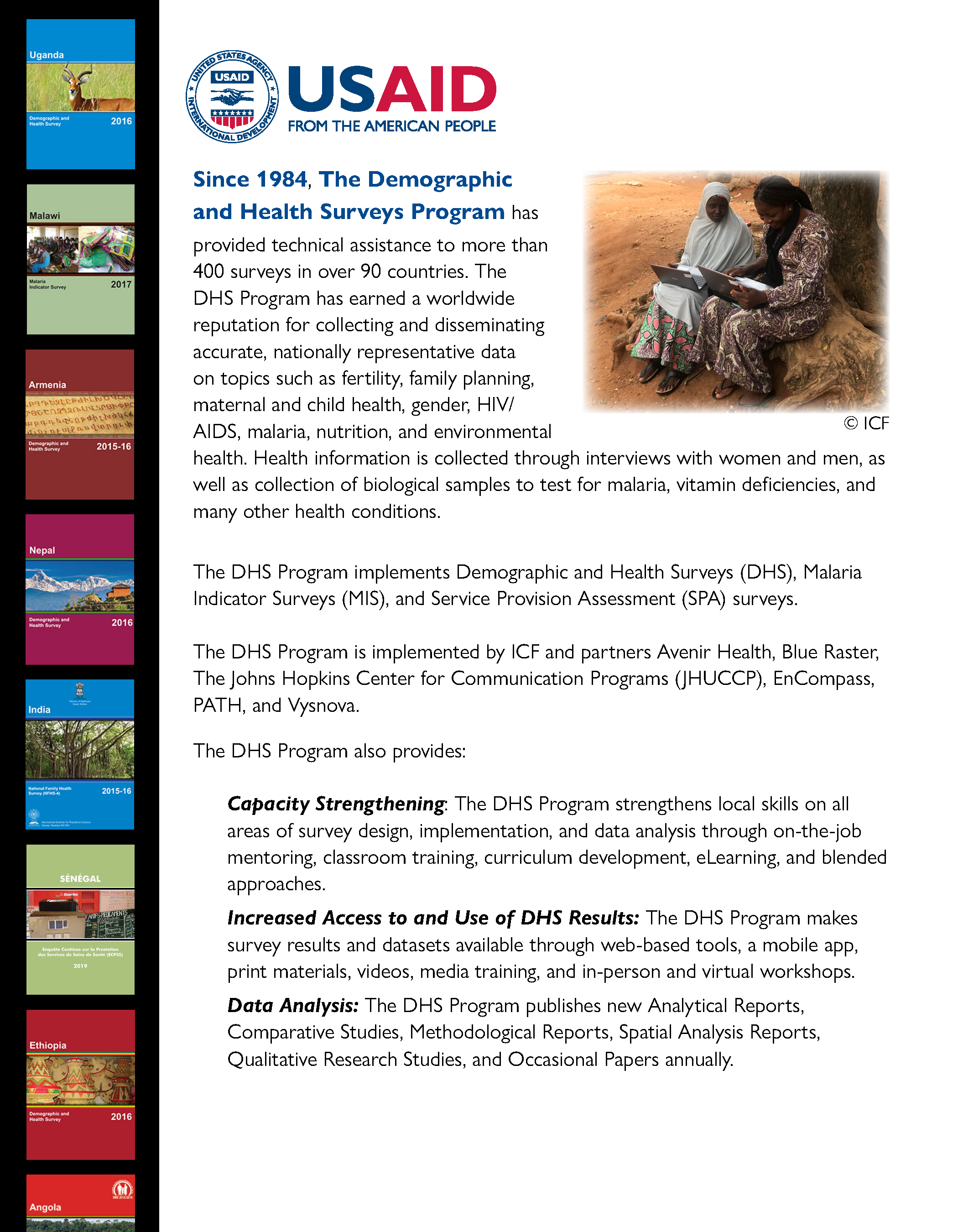Press Releases
HIV prevalence decreases slightly among men in Tanzania; HIV testing more common
Dar es Salaam, Tanzania. Fewer men are HIV-positive now than four years ago according to the just released 2007-08 Tanzania Malaria and HIV/AIDS Indicator Survey (THMIS). Currently 4.6% of men are HIV-positive compared to 6.3% reported in the 2003-04 Tanzania HIV/AIDS Indicator Survey. Over 8,700 women and 6,300 men were tested during the 2007-08 THMIS. The survey was funded by the Government of Tanzania, the United Stated Agency for International Development, and the President’s Emergency Plan for AIDS Relief. The National Bureau of Statistics and the Office of Chief Government Statistician, Zanzibar conducted the survey.
According to the 2007-08 THMIS, the national HIV prevalence is 5.7%, down from 7.0% reported in 2003-04. Women’s HIV prevalence has decreased slightly as well, but due to the sample error associated with the surveys, the decrease among women is small enough that it could have happened simply by chance and not because it represents an actual change in the population. Prevalence among women is currently 6.6%, compared to 7.7% reported in 2003-04.
Women continue to be harder hit by HIV/AIDS than men. This is especially true in urban areas, where 10.6% of women are HIV positive compared to only 6.4% of men. Women are also infected at an earlier age than men. By age 20-24, 6.3% of young women are already infected compared to only 1.7% of men in that age group.
Some regions of Tanzania carry a heavier burden of HIV than others. Sixteen percent of women and men age 15-49 in Iringa and 9% in Mbeya and Dar es Salaam are infected with HIV. Mara, Pwani, Shinyanga, and Tabora also have rates that are higher than the national average. HIV prevalence is less than 2% in Arusha, Kigoma, Kilimanjaro, Manyara, and Zanzibar.
Women and men from wealthier households are more likely to be infected with HIV. Almost 10% of women from the wealthiest households are HIV-positive compared to only 5% of women from the poorest households.
While prevalence has remained relatively stable, other changes are more certain and dramatic. Voluntary HIV testing has tripled since 2003-04. Almost one in five (19%) Tanzanians age 15-49 were tested for HIV and received the result in the year before the survey compared to only 6% in the year before the 2003-04 survey. Testing of pregnant women during antenatal care has also increased markedly (23% and 43%, respectively).
Many more Tanzanians now know that transmission of HIV from mother to child can be prevented. Currently, half of women know that HIV can be transmitted by breastfeeding and that the risk of transmission from mother to child can be reduced by the woman taking special drugs during her pregnancy. Only 15% of women had this knowledge in 2003-04. Knowledge of HIV prevention via condom use, staying faithful, and abstinence has not changed.
HIV/AIDS is a common cause of orphanhood. Eleven percent of children under age 18 in Tanzania are orphans, the same proportion reported in 2003-04. An additional 8% are considered “vulnerable” because they have lived with a very sick adult during the year before the survey. In all, 18% of children under 18 are orphans or vulnerable children (OVC).
About the survey: The 2007-08 THMIS is the eighth national survey carried out as part of the Demographic and Health Surveys project in Tanzania. The THMIS was commissioned by the Tanzania Commission for AIDS (TACAIDS) and the Zanzibar AIDS Commission (ZAC) and implemented by the National Bureau of Statistics (NBS) and the Office of Chief Government Statistician, Zanzibar (OCGS). Macro International Inc. provided technical assistance for the survey through the United States Agency for International Development (USAID)-funded MEASURE DHS programme. Other assistance was provided by the National AIDS Control Programme, the National Malaria Control Programme, the Ministry of Health and Social Welfare, the Zanzibar AIDS Control Programme, and the Muhimbili University College of Health Sciences.
